Pixar Unveils AI Animal Character Creation Style Guide
Artificial intelligence is revolutionizing the creative world, making it possible for anyone to conjure up breathtaking visuals with just a few words. This includes crafting animal characters in the iconic Pixar style, known for its charm and emotional depth. This guide will walk you through using AI tools to create your own Pixar-inspired animal characters, from crafting the perfect prompt to fine-tuning the final design. You'll discover how to bring to life characters like cats, dogs, elephants, giraffes, and more.
Introduction to AI-Powered Character Design
The Rise of AI in Art and Design
Artificial intelligence is making waves in the art and design world, opening up new possibilities for creators. AI can sift through massive collections of images, styles, and techniques to produce original artwork, animations, and 3D models. This technology levels the playing field, allowing those without formal art training to dive into creative projects.
AI's knack for recognizing patterns and replicating styles is particularly useful. By studying Pixar animations, these algorithms can capture the studio's signature traits—like exaggerated proportions, expressive eyes, and soft textures. This means anyone can now create Pixar-style animal characters with ease. This technology is shaking things up in advertising, entertainment, and education, offering fresh ways to tell visual stories.
The push towards AI in character design is driven by several factors: it speeds up the process, cuts costs, and expands creative horizons. AI lets artists churn out multiple design iterations quickly, which is a game-changer for independent creators and small studios. It also paves the way for new creative experiments that would be tough to pull off manually.
As AI technology evolves, we're looking at even more advanced tools for character design. Researchers are working on improving control, customization, and the emotional depth of AI-generated characters. As AI becomes a staple in the design process, it's set to redefine the roles of artists and designers, freeing them up for more creative tasks while handling the routine ones.
Understanding the Pixar Style
The Pixar style is celebrated for its emotionally engaging and visually appealing character designs. It's all about exaggerated proportions, expressive eyes, soft textures, and characters with relatable personalities. Grasping these elements is key to guiding AI tools to produce characters that truly embody the Pixar aesthetic. It's about translating that emotional depth and visual charm into a prompt that AI can interpret and replicate.
One of the hallmarks of the Pixar style is those exaggerated proportions. Characters often sport larger heads, smaller bodies, and big eyes, which make them seem cuter and more emotionally expressive. These proportions add to the warmth and approachability that Pixar characters are known for. When you're crafting your prompts, be sure to mention these exaggerated features to steer the AI in the right direction.
Expressive eyes are another signature of the Pixar style. Characters' eyes are large, round, and packed with details that convey a wide range of emotions. Small changes in eye shape, pupil size, or brow position can shift the character's emotional state dramatically. Make sure your prompts highlight the need for detailed and expressive eyes to capture the essence of Pixar's character animation.
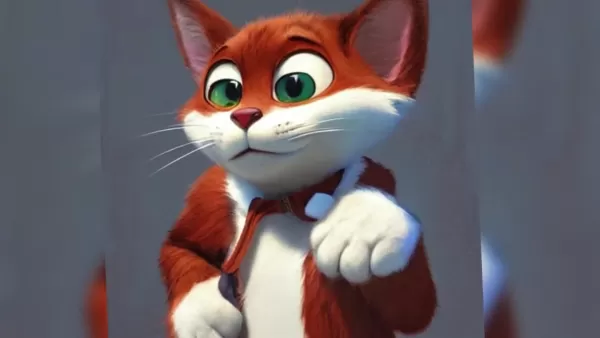
Soft textures play a big role in creating a tactile and inviting visual experience. Pixar characters often have fur, feathers, or skin that looks soft and plush. This is achieved through careful rendering of light and shadow, giving a sense of depth and realism. Your prompts should encourage the AI to generate characters with detailed textures that mimic the softness of real-world materials.
Lastly, the Pixar style focuses on relatable personality traits. Characters are designed to be endearing, sympathetic, and often humorous, embodying universal themes like friendship, courage, and self-discovery. This makes them accessible to audiences of all ages. Your prompts should include these personality traits to ensure the AI creates characters that are not only visually appealing but also emotionally engaging. Think about specifying details like a kind smile, a mischievous grin, or a determined expression.
Specific AI Tools: A Comparative Look
Side-by-Side Comparison of AI Character Generators
Feature Midjourney DALL-E 2 Stable Diffusion Ease of Use Moderate High Moderate to High Customization Moderate High Very High Output Quality Very High (Artistic) High (Realistic) High (Versatile) Pricing Subscription-based Credit-based Open Source (Variable Costs) Best For Artistic and dreamlike characters Precise control and editing Highly customized projects
Midjourney is great for those artistic, dreamlike characters. It produces stunning images with intricate details, perfect for a whimsical or fantastical look. However, you might need to play around a bit to get exactly what you want due to its less precise control over parameters.
DALL-E 2, on the other hand, offers a user-friendly interface and more control over the images it generates. It's ideal for those who want to fine-tune their character designs with precise text-based prompts and editing options.
Stable Diffusion is an open-source gem that offers a high degree of customization and flexibility. It's perfect for those who want to experiment with different styles and generate images tailored to their specific needs. This tool is a powerhouse for experienced users looking to push the limits of AI-powered character design.
Step-by-Step Guide to AI Animal Character Creation
Choosing the Right AI Tool
Picking the right AI tool is crucial for your character creation journey. There are several platforms out there, each with its own strengths and weaknesses. Popular choices include Midjourney, DALL-E 2, and Stable Diffusion. You'll want to consider factors like ease of use, customization options, and output quality to get the best results.
Midjourney is your go-to for those artistic, dreamlike outputs. It's fantastic at creating visually stunning images with intricate details, making it ideal for characters with a whimsical or fantastical vibe. Just be prepared to experiment a bit to get the exact results you're after.
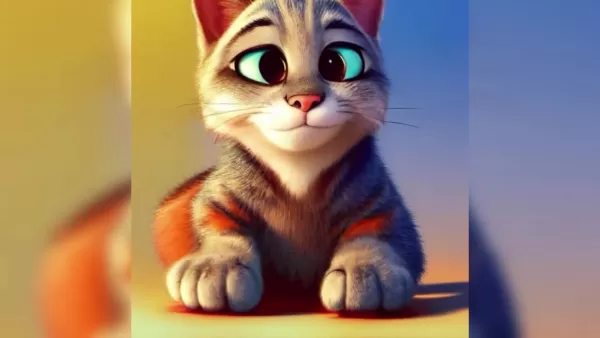
DALL-E 2 offers a more user-friendly experience and greater control over the images it generates. It's perfect for those who want to get hands-on with their character design, using precise text-based prompts and editing options to refine their creations.
Stable Diffusion is an open-source option that gives you a high degree of customization and flexibility. It lets you fine-tune the AI model, experiment with different styles, and generate images tailored to your specific needs. This tool is a powerhouse for experienced users looking to push the boundaries of AI-powered character design.
When choosing your tool, think about your technical skills, budget, and how much control you want over the process. Each platform offers unique features and capabilities, so pick the one that aligns best with your creative goals.
Crafting Effective Prompts
Crafting effective prompts is the heart of AI-powered character creation. A well-crafted prompt serves as a blueprint for the AI, guiding it to generate images that match your creative vision. Your prompts should be specific, descriptive, and packed with relevant keywords to get the results you want. Don't be afraid to experiment, as small changes in your prompt can lead to big differences in the output.
An effective prompt typically includes these elements:
- Character Description: Give a detailed description of the animal you want to create, including its species, breed, and physical attributes. For example, "a fluffy golden retriever puppy with big, expressive eyes."
- Style Specification: Clearly state that you want the character in the Pixar style. For example, "in the style of Pixar animation."
- Emotional Tone: Define the emotional state of the character, such as happy, sad, mischievous, or brave. For example, "a happy and playful puppy."
- Setting and Composition: Describe the environment in which the character is situated and the overall composition of the image. For example, "sitting in a sunny meadow, looking directly at the viewer."
Combining these elements into a cohesive prompt can significantly improve the quality of the AI-generated image. Here are a few examples:
- "A cute and cuddly kitten in the style of Pixar animation, with large, expressive eyes and soft fur, purring contentedly in a cozy basket."
- "A brave and adventurous lion cub in the style of Pixar animation, with a determined expression and a flowing mane, standing proudly on a rocky hilltop."
- "A mischievous and playful monkey in the style of Pixar animation, with a cheeky grin and sparkling eyes, swinging through the jungle vines."
Feel free to play around with different prompts to explore the range of possibilities offered by the AI tool. Small tweaks in wording or detail can lead to surprising and inspiring results. Keep iterating and refining your prompts until you achieve the desired outcome.
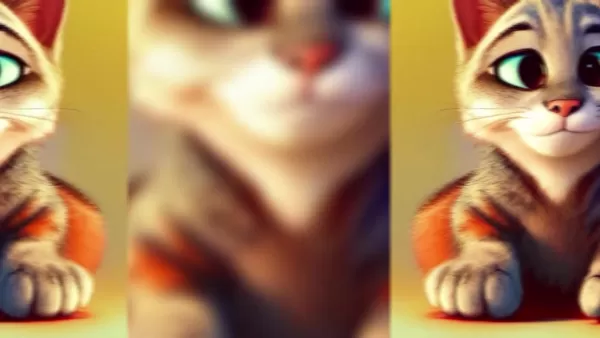
Iterating and Refining
AI-generated images often need a bit of tweaking to get them just right. Iterating and refining the output is a crucial step in the character creation process. This means generating multiple versions of the image, evaluating their strengths and weaknesses, and adjusting your prompt accordingly. It takes patience and persistence, but it's worth it to achieve the quality you're aiming for.
After generating your initial set of images, take a close look at each one to identify areas for improvement. Ask yourself:
- Does the character accurately reflect the Pixar style?
- Are the proportions exaggerated and visually appealing?
- Do the eyes convey the desired emotions?
- Is the texture soft and detailed?
- Does the overall composition effectively showcase the character?
Based on your evaluation, make specific adjustments to your prompt. For example, if the eyes aren't expressive enough, add more detail to the prompt, like "with sparkling, expressive eyes that convey a sense of wonder."
Generate another set of images with your revised prompt and repeat the evaluation process. Keep iterating and refining until you're happy with the results. This approach allows you to gradually guide the AI towards your creative vision.
Many AI tools also offer options for directly editing and refining the generated images. This might involve adjusting colors, textures, or proportions, or adding additional details. These editing tools can be invaluable for fine-tuning your character and achieving a polished final product.
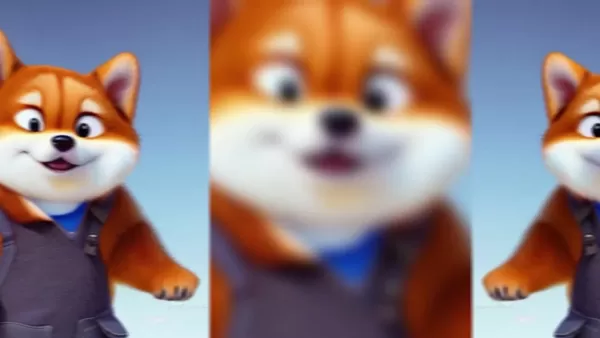
The Benefits and Drawbacks of AI Character Creation
Pros
- Accessibility: AI makes character creation more accessible to everyone.
- Speed: AI speeds up the design process, saving you time.
- Iteration: AI allows for rapid experimentation and refinement of designs.
- Cost-Effectiveness: AI reduces the financial burden of character design.
- Novelty: AI opens up new creative possibilities that were previously out of reach.
Cons
- Lack of Control: AI outputs may not always align perfectly with your vision.
- Dependence on Prompts: Crafting effective prompts requires skill and experience.
- Ethical Concerns: AI raises questions about copyright and originality.
- Technical Limitations: AI may struggle with complex or nuanced designs.
- Over-Reliance: Relying too heavily on AI can stifle creativity and innovation.
Real-World Applications of AI-Generated Characters
Diverse Applications in Entertainment, Education, and More
AI-generated characters are popping up in all sorts of fields, from entertainment to education. The ability to quickly and cost-effectively create visually appealing characters opens up new avenues for storytelling, marketing, and educational content creation.
In the entertainment industry, AI-generated characters can populate animated films, TV shows, and video games. AI speeds up the character design process, allowing creators to focus on higher-level tasks like scriptwriting, directing, and animation. AI-generated characters are also making waves in marketing and advertising. Brands can use AI to create mascots, spokespeople, and other visual elements that engage consumers and promote their products.
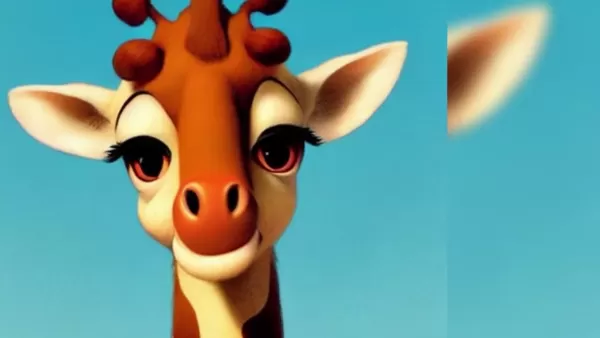
In the education sector, AI-generated characters can create engaging and interactive learning materials. AI can generate characters that represent diverse backgrounds, cultures, and perspectives, fostering inclusivity and promoting cultural awareness. AI-generated characters can also be used to create personalized learning experiences tailored to the individual needs of each student.
Beyond entertainment, marketing, and education, AI-generated characters are finding applications in various other fields. In healthcare, AI can generate characters that interact with patients, providing companionship and emotional support. In virtual reality, AI can create immersive experiences populated with realistic and engaging characters. The possibilities are endless, as AI continues to evolve and become more integrated into our daily lives.
Frequently Asked Questions
Are AI-generated characters truly original?
The originality of AI-generated characters is a bit of a gray area. AI algorithms are trained on existing datasets of images, which raises questions about copyright and intellectual property. While AI can generate novel combinations of elements, the underlying source material isn't entirely original. This is a hot topic for debate and legal interpretation.
Can AI replace human artists in character design?
It's unlikely that AI will completely replace human artists in character design. While AI can automate certain tasks and speed up the design process, human creativity, intuition, and emotional intelligence are still essential. AI is best seen as a tool to enhance, not replace, human artistic skills.
What are the ethical considerations of using AI for character creation?
Ethical considerations include potential copyright infringement, bias in AI algorithms, and the displacement of human artists. Addressing these concerns requires careful attention to dataset curation, algorithm transparency, and the responsible use of AI technology.
Related Questions
How do I ensure my AI-generated character aligns with my brand identity?
To ensure your AI-generated character aligns with your brand identity, focus on careful prompt engineering, style customization, and integrating your brand guidelines. Provide the AI with detailed brand guidelines, visual references, and tone specifications. Iterating and refining the output is also crucial to ensure the character accurately reflects your brand values.
What are the best practices for protecting my copyright when using AI-generated characters?
Protecting your copyright involves reviewing the terms of service of the AI tool, documenting the prompts and iterations used to generate the character, and seeking legal advice if necessary. Understanding the legal implications of AI-generated content is crucial for protecting your intellectual property.
How can I leverage AI to create diverse and inclusive characters?
To create diverse and inclusive characters, consciously incorporate diverse physical attributes, cultural backgrounds, and personality traits into your prompts. Avoid stereotypes and promote positive representation to foster inclusivity and promote cultural awareness.
What are the future trends in AI-powered character creation?
Future trends include enhanced control and customization, improved emotional expressiveness, and seamless integration with other design tools. Ongoing research focuses on developing AI models that can generate more realistic, nuanced, and emotionally resonant characters. The possibilities are endless, as AI continues to evolve and become more integrated into the design workflow.
Related article
 AI-Powered Cover Letters: Expert Guide for Journal Submissions
In today's competitive academic publishing environment, crafting an effective cover letter can make the crucial difference in your manuscript's acceptance. Discover how AI-powered tools like ChatGPT can streamline this essential task, helping you cre
AI-Powered Cover Letters: Expert Guide for Journal Submissions
In today's competitive academic publishing environment, crafting an effective cover letter can make the crucial difference in your manuscript's acceptance. Discover how AI-powered tools like ChatGPT can streamline this essential task, helping you cre
 US to Sanction Foreign Officials Over Social Media Regulations
US Takes Stand Against Global Digital Content Regulations
The State Department issued a sharp diplomatic rebuke this week targeting European digital governance policies, signaling escalating tensions over control of online platforms. Secretary Marco
US to Sanction Foreign Officials Over Social Media Regulations
US Takes Stand Against Global Digital Content Regulations
The State Department issued a sharp diplomatic rebuke this week targeting European digital governance policies, signaling escalating tensions over control of online platforms. Secretary Marco
 Ultimate Guide to AI-Powered YouTube Video Summarizers
In our information-rich digital landscape, AI-powered YouTube video summarizers have become indispensable for efficient content consumption. This in-depth guide explores how to build a sophisticated summarization tool using cutting-edge NLP technolog
Comments (13)
0/200
Ultimate Guide to AI-Powered YouTube Video Summarizers
In our information-rich digital landscape, AI-powered YouTube video summarizers have become indispensable for efficient content consumption. This in-depth guide explores how to build a sophisticated summarization tool using cutting-edge NLP technolog
Comments (13)
0/200
![JoeGonzález]() JoeGonzález
JoeGonzález
 August 13, 2025 at 5:00:59 AM EDT
August 13, 2025 at 5:00:59 AM EDT
This Pixar AI guide is wild! I tried making a sassy fox character, and it legit looks like it could star in a movie. 😎 Kinda scary how easy it is—makes me wonder if artists will need to pivot soon.


 0
0
![EricMiller]() EricMiller
EricMiller
 August 7, 2025 at 7:01:02 PM EDT
August 7, 2025 at 7:01:02 PM EDT
This Pixar AI guide sounds like a game-changer! I’m no artist, but now I’m tempted to try creating my own cuddly animal characters. 😍 Wonder how it handles quirky details like a sassy raccoon’s smirk?


 0
0
![WalterMartinez]() WalterMartinez
WalterMartinez
 July 23, 2025 at 12:59:47 AM EDT
July 23, 2025 at 12:59:47 AM EDT
This Pixar AI guide sounds super cool! 🐘 I love how it makes creating adorable animal characters so easy. Can’t wait to try it out and make my own talking lion or sassy parrot!


 0
0
![BenGarcía]() BenGarcía
BenGarcía
 May 2, 2025 at 5:21:19 AM EDT
May 2, 2025 at 5:21:19 AM EDT
Руководство Pixar по созданию персонажей животных с помощью ИИ - это так круто! Просто магия, как с помощью нескольких слов можно создать таких очаровательных существ. Но, немного сложно добиться правильной эмоциональной глубины. Тем не менее, это обязательно для любого начинающего художника! 🎨🐾


 0
0
![RobertRamirez]() RobertRamirez
RobertRamirez
 May 2, 2025 at 3:27:47 AM EDT
May 2, 2025 at 3:27:47 AM EDT
Pixar's AI guide for creating animal characters is pure magic! 🪄 It's amazing how you can bring those charming and emotionally deep characters to life with just a few words. I'm having a blast experimenting with it, though sometimes the results can be a bit too quirky. Still, highly recommend giving it a try!


 0
0
![JerryMoore]() JerryMoore
JerryMoore
 May 2, 2025 at 1:16:24 AM EDT
May 2, 2025 at 1:16:24 AM EDT
픽사의 AI 가이드를 사용해 동물 캐릭터를 만드는 건 정말 마법 같아요! 🪄 몇 마디만으로도 매력적이고 감정적으로 깊은 캐릭터를 생생하게 만들 수 있다니 놀랍네요. 실험하면서 재미있게 놀고 있어요, 다만 결과가 가끔 너무 기묘할 때가 있어요. 그래도 꼭 한번 시도해보세요!


 0
0
Artificial intelligence is revolutionizing the creative world, making it possible for anyone to conjure up breathtaking visuals with just a few words. This includes crafting animal characters in the iconic Pixar style, known for its charm and emotional depth. This guide will walk you through using AI tools to create your own Pixar-inspired animal characters, from crafting the perfect prompt to fine-tuning the final design. You'll discover how to bring to life characters like cats, dogs, elephants, giraffes, and more.
Introduction to AI-Powered Character Design
The Rise of AI in Art and Design
Artificial intelligence is making waves in the art and design world, opening up new possibilities for creators. AI can sift through massive collections of images, styles, and techniques to produce original artwork, animations, and 3D models. This technology levels the playing field, allowing those without formal art training to dive into creative projects.
AI's knack for recognizing patterns and replicating styles is particularly useful. By studying Pixar animations, these algorithms can capture the studio's signature traits—like exaggerated proportions, expressive eyes, and soft textures. This means anyone can now create Pixar-style animal characters with ease. This technology is shaking things up in advertising, entertainment, and education, offering fresh ways to tell visual stories.
The push towards AI in character design is driven by several factors: it speeds up the process, cuts costs, and expands creative horizons. AI lets artists churn out multiple design iterations quickly, which is a game-changer for independent creators and small studios. It also paves the way for new creative experiments that would be tough to pull off manually.
As AI technology evolves, we're looking at even more advanced tools for character design. Researchers are working on improving control, customization, and the emotional depth of AI-generated characters. As AI becomes a staple in the design process, it's set to redefine the roles of artists and designers, freeing them up for more creative tasks while handling the routine ones.
Understanding the Pixar Style
The Pixar style is celebrated for its emotionally engaging and visually appealing character designs. It's all about exaggerated proportions, expressive eyes, soft textures, and characters with relatable personalities. Grasping these elements is key to guiding AI tools to produce characters that truly embody the Pixar aesthetic. It's about translating that emotional depth and visual charm into a prompt that AI can interpret and replicate.
One of the hallmarks of the Pixar style is those exaggerated proportions. Characters often sport larger heads, smaller bodies, and big eyes, which make them seem cuter and more emotionally expressive. These proportions add to the warmth and approachability that Pixar characters are known for. When you're crafting your prompts, be sure to mention these exaggerated features to steer the AI in the right direction.
Expressive eyes are another signature of the Pixar style. Characters' eyes are large, round, and packed with details that convey a wide range of emotions. Small changes in eye shape, pupil size, or brow position can shift the character's emotional state dramatically. Make sure your prompts highlight the need for detailed and expressive eyes to capture the essence of Pixar's character animation.

Soft textures play a big role in creating a tactile and inviting visual experience. Pixar characters often have fur, feathers, or skin that looks soft and plush. This is achieved through careful rendering of light and shadow, giving a sense of depth and realism. Your prompts should encourage the AI to generate characters with detailed textures that mimic the softness of real-world materials.
Lastly, the Pixar style focuses on relatable personality traits. Characters are designed to be endearing, sympathetic, and often humorous, embodying universal themes like friendship, courage, and self-discovery. This makes them accessible to audiences of all ages. Your prompts should include these personality traits to ensure the AI creates characters that are not only visually appealing but also emotionally engaging. Think about specifying details like a kind smile, a mischievous grin, or a determined expression.
Specific AI Tools: A Comparative Look
Side-by-Side Comparison of AI Character Generators
| Feature | Midjourney | DALL-E 2 | Stable Diffusion |
|---|---|---|---|
| Ease of Use | Moderate | High | Moderate to High |
| Customization | Moderate | High | Very High |
| Output Quality | Very High (Artistic) | High (Realistic) | High (Versatile) |
| Pricing | Subscription-based | Credit-based | Open Source (Variable Costs) |
| Best For | Artistic and dreamlike characters | Precise control and editing | Highly customized projects |
Midjourney is great for those artistic, dreamlike characters. It produces stunning images with intricate details, perfect for a whimsical or fantastical look. However, you might need to play around a bit to get exactly what you want due to its less precise control over parameters.
DALL-E 2, on the other hand, offers a user-friendly interface and more control over the images it generates. It's ideal for those who want to fine-tune their character designs with precise text-based prompts and editing options.
Stable Diffusion is an open-source gem that offers a high degree of customization and flexibility. It's perfect for those who want to experiment with different styles and generate images tailored to their specific needs. This tool is a powerhouse for experienced users looking to push the limits of AI-powered character design.
Step-by-Step Guide to AI Animal Character Creation
Choosing the Right AI Tool
Picking the right AI tool is crucial for your character creation journey. There are several platforms out there, each with its own strengths and weaknesses. Popular choices include Midjourney, DALL-E 2, and Stable Diffusion. You'll want to consider factors like ease of use, customization options, and output quality to get the best results.
Midjourney is your go-to for those artistic, dreamlike outputs. It's fantastic at creating visually stunning images with intricate details, making it ideal for characters with a whimsical or fantastical vibe. Just be prepared to experiment a bit to get the exact results you're after.

DALL-E 2 offers a more user-friendly experience and greater control over the images it generates. It's perfect for those who want to get hands-on with their character design, using precise text-based prompts and editing options to refine their creations.
Stable Diffusion is an open-source option that gives you a high degree of customization and flexibility. It lets you fine-tune the AI model, experiment with different styles, and generate images tailored to your specific needs. This tool is a powerhouse for experienced users looking to push the boundaries of AI-powered character design.
When choosing your tool, think about your technical skills, budget, and how much control you want over the process. Each platform offers unique features and capabilities, so pick the one that aligns best with your creative goals.
Crafting Effective Prompts
Crafting effective prompts is the heart of AI-powered character creation. A well-crafted prompt serves as a blueprint for the AI, guiding it to generate images that match your creative vision. Your prompts should be specific, descriptive, and packed with relevant keywords to get the results you want. Don't be afraid to experiment, as small changes in your prompt can lead to big differences in the output.
An effective prompt typically includes these elements:
- Character Description: Give a detailed description of the animal you want to create, including its species, breed, and physical attributes. For example, "a fluffy golden retriever puppy with big, expressive eyes."
- Style Specification: Clearly state that you want the character in the Pixar style. For example, "in the style of Pixar animation."
- Emotional Tone: Define the emotional state of the character, such as happy, sad, mischievous, or brave. For example, "a happy and playful puppy."
- Setting and Composition: Describe the environment in which the character is situated and the overall composition of the image. For example, "sitting in a sunny meadow, looking directly at the viewer."
Combining these elements into a cohesive prompt can significantly improve the quality of the AI-generated image. Here are a few examples:
- "A cute and cuddly kitten in the style of Pixar animation, with large, expressive eyes and soft fur, purring contentedly in a cozy basket."
- "A brave and adventurous lion cub in the style of Pixar animation, with a determined expression and a flowing mane, standing proudly on a rocky hilltop."
- "A mischievous and playful monkey in the style of Pixar animation, with a cheeky grin and sparkling eyes, swinging through the jungle vines."
Feel free to play around with different prompts to explore the range of possibilities offered by the AI tool. Small tweaks in wording or detail can lead to surprising and inspiring results. Keep iterating and refining your prompts until you achieve the desired outcome.

Iterating and Refining
AI-generated images often need a bit of tweaking to get them just right. Iterating and refining the output is a crucial step in the character creation process. This means generating multiple versions of the image, evaluating their strengths and weaknesses, and adjusting your prompt accordingly. It takes patience and persistence, but it's worth it to achieve the quality you're aiming for.
After generating your initial set of images, take a close look at each one to identify areas for improvement. Ask yourself:
- Does the character accurately reflect the Pixar style?
- Are the proportions exaggerated and visually appealing?
- Do the eyes convey the desired emotions?
- Is the texture soft and detailed?
- Does the overall composition effectively showcase the character?
Based on your evaluation, make specific adjustments to your prompt. For example, if the eyes aren't expressive enough, add more detail to the prompt, like "with sparkling, expressive eyes that convey a sense of wonder."
Generate another set of images with your revised prompt and repeat the evaluation process. Keep iterating and refining until you're happy with the results. This approach allows you to gradually guide the AI towards your creative vision.
Many AI tools also offer options for directly editing and refining the generated images. This might involve adjusting colors, textures, or proportions, or adding additional details. These editing tools can be invaluable for fine-tuning your character and achieving a polished final product.

The Benefits and Drawbacks of AI Character Creation
Pros
- Accessibility: AI makes character creation more accessible to everyone.
- Speed: AI speeds up the design process, saving you time.
- Iteration: AI allows for rapid experimentation and refinement of designs.
- Cost-Effectiveness: AI reduces the financial burden of character design.
- Novelty: AI opens up new creative possibilities that were previously out of reach.
Cons
- Lack of Control: AI outputs may not always align perfectly with your vision.
- Dependence on Prompts: Crafting effective prompts requires skill and experience.
- Ethical Concerns: AI raises questions about copyright and originality.
- Technical Limitations: AI may struggle with complex or nuanced designs.
- Over-Reliance: Relying too heavily on AI can stifle creativity and innovation.
Real-World Applications of AI-Generated Characters
Diverse Applications in Entertainment, Education, and More
AI-generated characters are popping up in all sorts of fields, from entertainment to education. The ability to quickly and cost-effectively create visually appealing characters opens up new avenues for storytelling, marketing, and educational content creation.
In the entertainment industry, AI-generated characters can populate animated films, TV shows, and video games. AI speeds up the character design process, allowing creators to focus on higher-level tasks like scriptwriting, directing, and animation. AI-generated characters are also making waves in marketing and advertising. Brands can use AI to create mascots, spokespeople, and other visual elements that engage consumers and promote their products.

In the education sector, AI-generated characters can create engaging and interactive learning materials. AI can generate characters that represent diverse backgrounds, cultures, and perspectives, fostering inclusivity and promoting cultural awareness. AI-generated characters can also be used to create personalized learning experiences tailored to the individual needs of each student.
Beyond entertainment, marketing, and education, AI-generated characters are finding applications in various other fields. In healthcare, AI can generate characters that interact with patients, providing companionship and emotional support. In virtual reality, AI can create immersive experiences populated with realistic and engaging characters. The possibilities are endless, as AI continues to evolve and become more integrated into our daily lives.
Frequently Asked Questions
Are AI-generated characters truly original?
The originality of AI-generated characters is a bit of a gray area. AI algorithms are trained on existing datasets of images, which raises questions about copyright and intellectual property. While AI can generate novel combinations of elements, the underlying source material isn't entirely original. This is a hot topic for debate and legal interpretation.
Can AI replace human artists in character design?
It's unlikely that AI will completely replace human artists in character design. While AI can automate certain tasks and speed up the design process, human creativity, intuition, and emotional intelligence are still essential. AI is best seen as a tool to enhance, not replace, human artistic skills.
What are the ethical considerations of using AI for character creation?
Ethical considerations include potential copyright infringement, bias in AI algorithms, and the displacement of human artists. Addressing these concerns requires careful attention to dataset curation, algorithm transparency, and the responsible use of AI technology.
Related Questions
How do I ensure my AI-generated character aligns with my brand identity?
To ensure your AI-generated character aligns with your brand identity, focus on careful prompt engineering, style customization, and integrating your brand guidelines. Provide the AI with detailed brand guidelines, visual references, and tone specifications. Iterating and refining the output is also crucial to ensure the character accurately reflects your brand values.
What are the best practices for protecting my copyright when using AI-generated characters?
Protecting your copyright involves reviewing the terms of service of the AI tool, documenting the prompts and iterations used to generate the character, and seeking legal advice if necessary. Understanding the legal implications of AI-generated content is crucial for protecting your intellectual property.
How can I leverage AI to create diverse and inclusive characters?
To create diverse and inclusive characters, consciously incorporate diverse physical attributes, cultural backgrounds, and personality traits into your prompts. Avoid stereotypes and promote positive representation to foster inclusivity and promote cultural awareness.
What are the future trends in AI-powered character creation?
Future trends include enhanced control and customization, improved emotional expressiveness, and seamless integration with other design tools. Ongoing research focuses on developing AI models that can generate more realistic, nuanced, and emotionally resonant characters. The possibilities are endless, as AI continues to evolve and become more integrated into the design workflow.
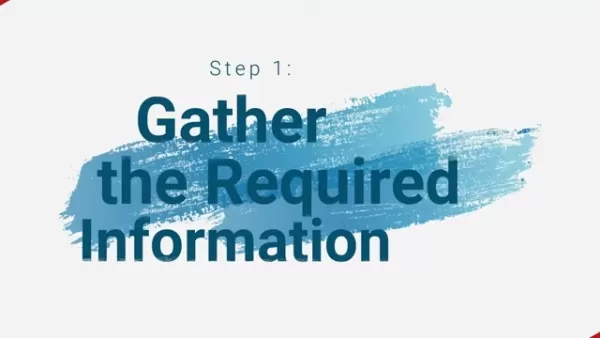 AI-Powered Cover Letters: Expert Guide for Journal Submissions
In today's competitive academic publishing environment, crafting an effective cover letter can make the crucial difference in your manuscript's acceptance. Discover how AI-powered tools like ChatGPT can streamline this essential task, helping you cre
AI-Powered Cover Letters: Expert Guide for Journal Submissions
In today's competitive academic publishing environment, crafting an effective cover letter can make the crucial difference in your manuscript's acceptance. Discover how AI-powered tools like ChatGPT can streamline this essential task, helping you cre
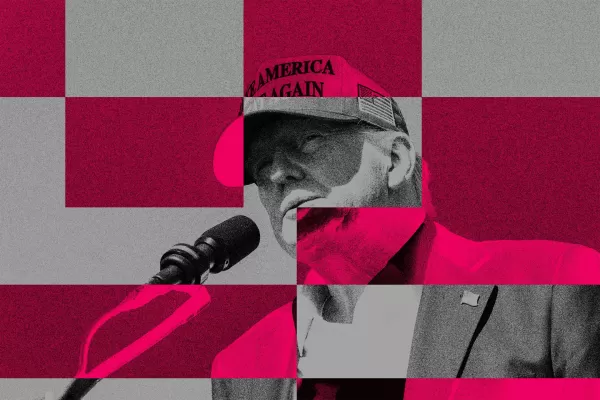 US to Sanction Foreign Officials Over Social Media Regulations
US Takes Stand Against Global Digital Content Regulations
The State Department issued a sharp diplomatic rebuke this week targeting European digital governance policies, signaling escalating tensions over control of online platforms. Secretary Marco
US to Sanction Foreign Officials Over Social Media Regulations
US Takes Stand Against Global Digital Content Regulations
The State Department issued a sharp diplomatic rebuke this week targeting European digital governance policies, signaling escalating tensions over control of online platforms. Secretary Marco
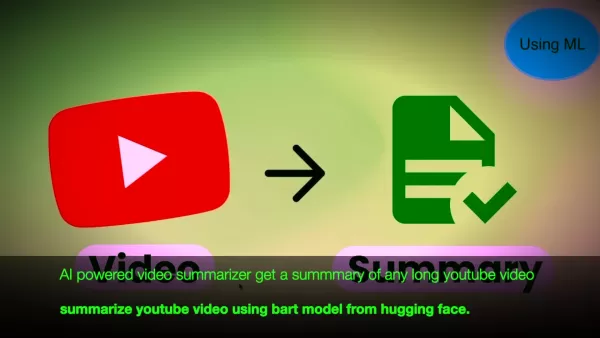 Ultimate Guide to AI-Powered YouTube Video Summarizers
In our information-rich digital landscape, AI-powered YouTube video summarizers have become indispensable for efficient content consumption. This in-depth guide explores how to build a sophisticated summarization tool using cutting-edge NLP technolog
Ultimate Guide to AI-Powered YouTube Video Summarizers
In our information-rich digital landscape, AI-powered YouTube video summarizers have become indispensable for efficient content consumption. This in-depth guide explores how to build a sophisticated summarization tool using cutting-edge NLP technolog
 August 13, 2025 at 5:00:59 AM EDT
August 13, 2025 at 5:00:59 AM EDT
This Pixar AI guide is wild! I tried making a sassy fox character, and it legit looks like it could star in a movie. 😎 Kinda scary how easy it is—makes me wonder if artists will need to pivot soon.


 0
0
 August 7, 2025 at 7:01:02 PM EDT
August 7, 2025 at 7:01:02 PM EDT
This Pixar AI guide sounds like a game-changer! I’m no artist, but now I’m tempted to try creating my own cuddly animal characters. 😍 Wonder how it handles quirky details like a sassy raccoon’s smirk?


 0
0
 July 23, 2025 at 12:59:47 AM EDT
July 23, 2025 at 12:59:47 AM EDT
This Pixar AI guide sounds super cool! 🐘 I love how it makes creating adorable animal characters so easy. Can’t wait to try it out and make my own talking lion or sassy parrot!


 0
0
 May 2, 2025 at 5:21:19 AM EDT
May 2, 2025 at 5:21:19 AM EDT
Руководство Pixar по созданию персонажей животных с помощью ИИ - это так круто! Просто магия, как с помощью нескольких слов можно создать таких очаровательных существ. Но, немного сложно добиться правильной эмоциональной глубины. Тем не менее, это обязательно для любого начинающего художника! 🎨🐾


 0
0
 May 2, 2025 at 3:27:47 AM EDT
May 2, 2025 at 3:27:47 AM EDT
Pixar's AI guide for creating animal characters is pure magic! 🪄 It's amazing how you can bring those charming and emotionally deep characters to life with just a few words. I'm having a blast experimenting with it, though sometimes the results can be a bit too quirky. Still, highly recommend giving it a try!


 0
0
 May 2, 2025 at 1:16:24 AM EDT
May 2, 2025 at 1:16:24 AM EDT
픽사의 AI 가이드를 사용해 동물 캐릭터를 만드는 건 정말 마법 같아요! 🪄 몇 마디만으로도 매력적이고 감정적으로 깊은 캐릭터를 생생하게 만들 수 있다니 놀랍네요. 실험하면서 재미있게 놀고 있어요, 다만 결과가 가끔 너무 기묘할 때가 있어요. 그래도 꼭 한번 시도해보세요!


 0
0





























